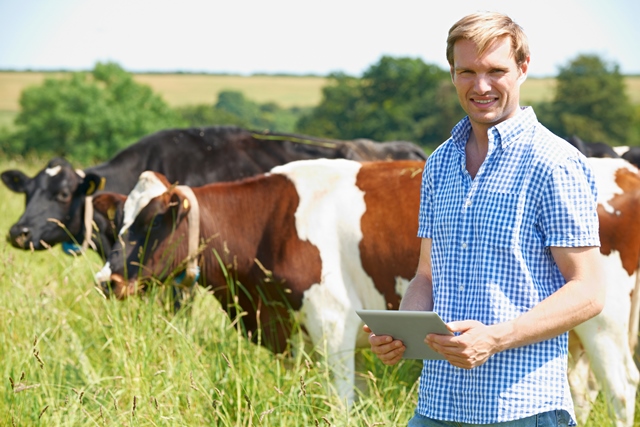
The cowbell is so yesterday, if entrepreneur Victoria Alonsopérez has her way. The founder of startup Chipsafer was thinking about this when she was barely a teenager, during a 2001 outbreak of foot-and-mouth disease in her native Uruguay—she wondered how you could follow cattle, so farmers and ranchers could know where the animal had been when it contracted the contagion, or infected others.
Now an electronics, telecommunication, and electrical engineer, her solution is the “Internet of Cows” —replacing cowbells with ear tag or collar wearables. These sensors employ long-range (LoRa) and LoRa wide-area network (LoRaWAN) technology from Semtech to track GPS location and movement, transmitting the animal’s position to a mobile device and issuing an alert when it ranges off course. The solution can also make inroads against cattle rustling, a significant problem in Latin America and Africa.
The Semtech technology is optimized for IoT communications via wide-range, low-power consumption and secure data transmission that provides a greater range of coverage than cellular networks. The collars or tags are placed on the steers; gateways are mounted on poles at intervals across the terrain. The sensors report back to the gateways with tracking data, which is uplinked via satellite to the cloud.
Alonsopérez recently won a Chivas Venture award—just in the nick of time (the award provides funding to global startups run by social entrepreneurs that use business ideas to improve lives). “When I went to compete in San Francisco I was almost bankrupt,” she said in an interview. “Chipsafer had something like $4,000 in the bank account. If it wasn’t for the competition, maybe my company would have closed… The Chivas Venture was a key milestone in Chipsafer’s journey; we wouldn’t be where we are now if it wasn’t for the prize money.”
Her goal is to get the cost of technology down so everyone can use it. She sees another use in conservation, after a safari during a visit to the U.N. in Kenya. “The information we can get is amazing, and we still don’t know the extent of what we can learn…to help protect wildlife and biodiversity.”
Alonsopérez also believes the “IoC” can help ensure animals are not raised in at-risk areas. “We want to make sure the animals are not having a negative impact on the environment, and thereby help in tackling the global warming problem.” Food security and provenance are part of that equation; she said people generally don’t know where their food came from, under what conditions the animals were raised, and how it affected that ecosystem. “Chipsafer can provide information that helps people be more responsible for what they are eating.”
The company has completed pilots in Kenya, Luxembourg, and Namibia; others are underway in Australia, Brazil, the Netherlands, and Uruguay. In addition to providing its platform, Chipsafer wants to capture and interpret cattle behavior and manage the information for users in the cloud; veterinarians and computer scientists are working on algorithms to ruminate on the data.
